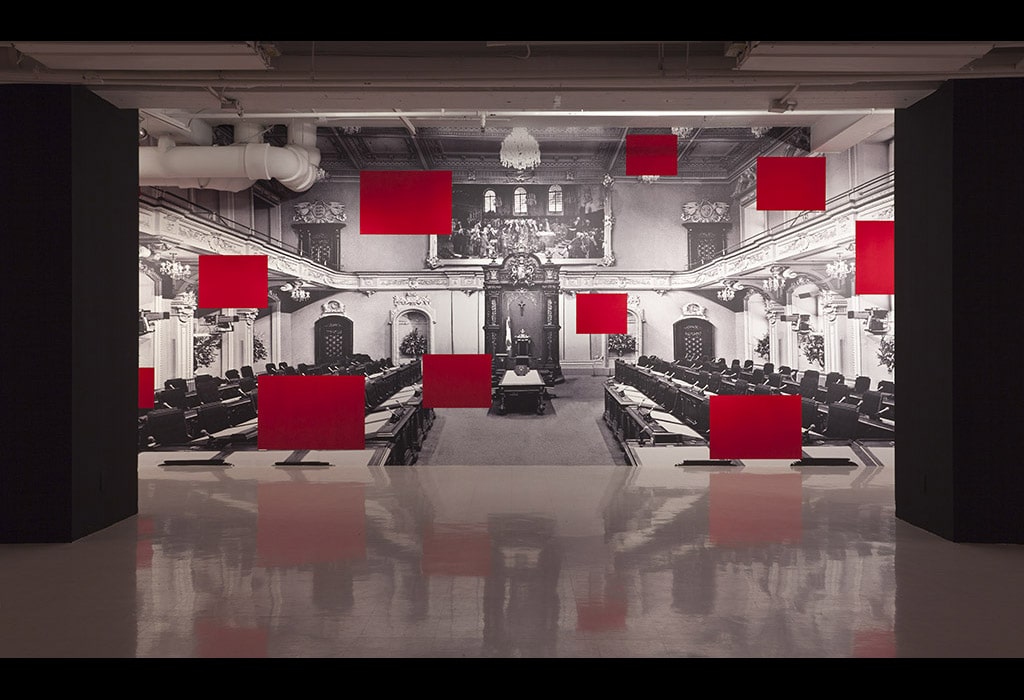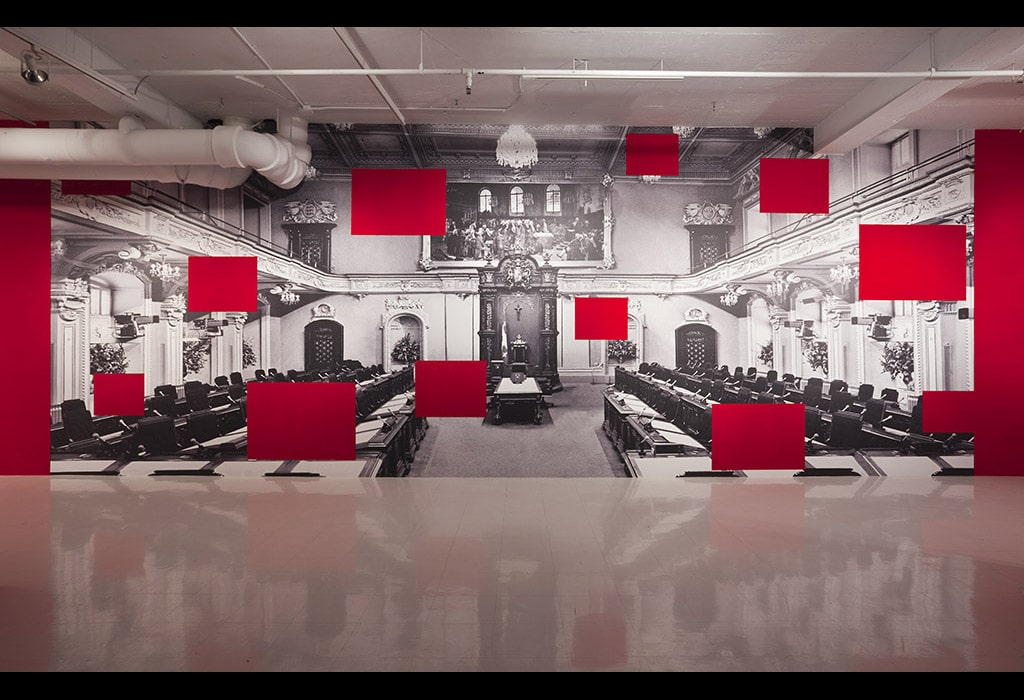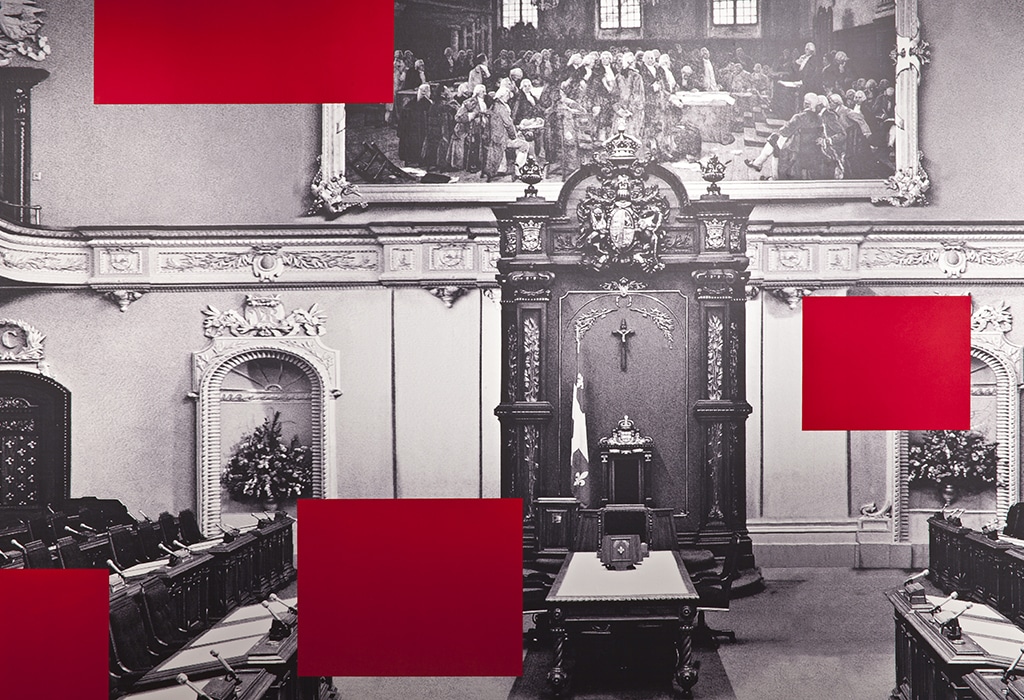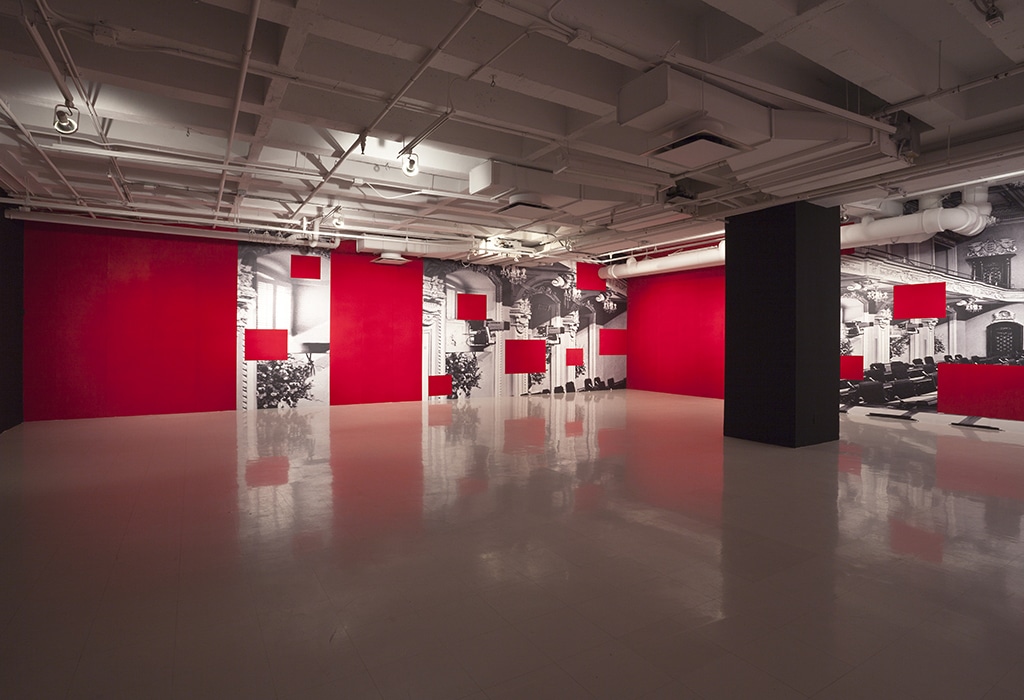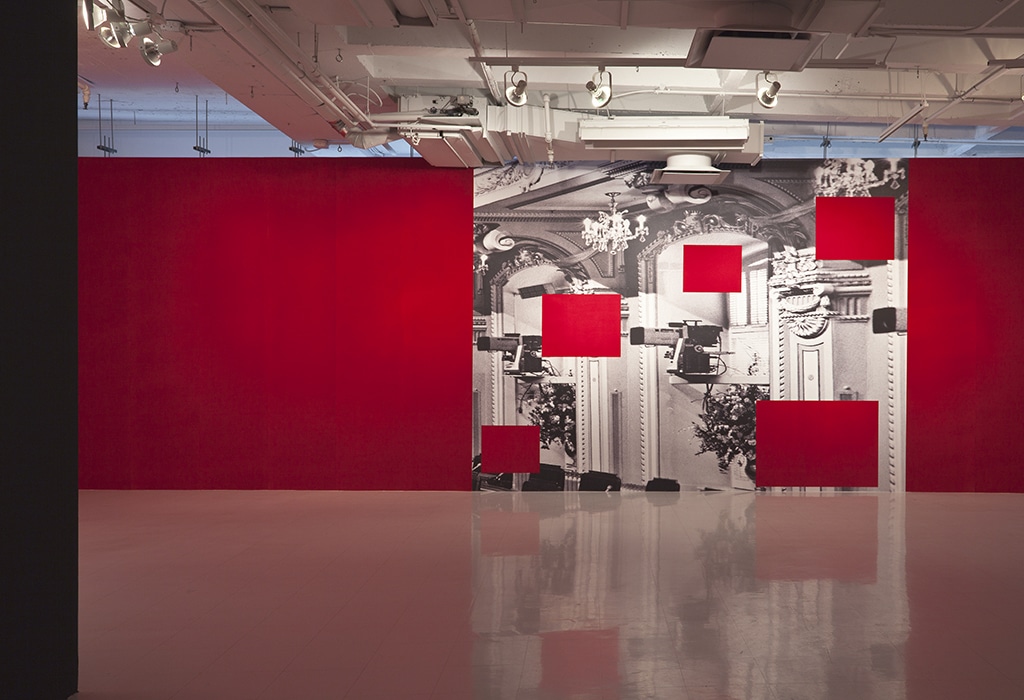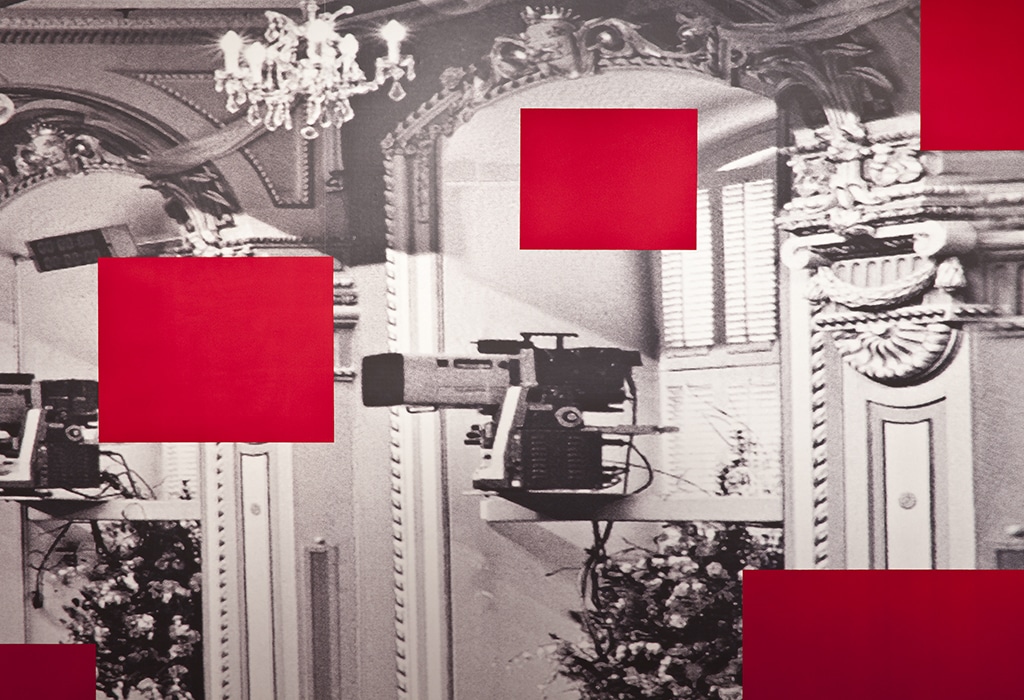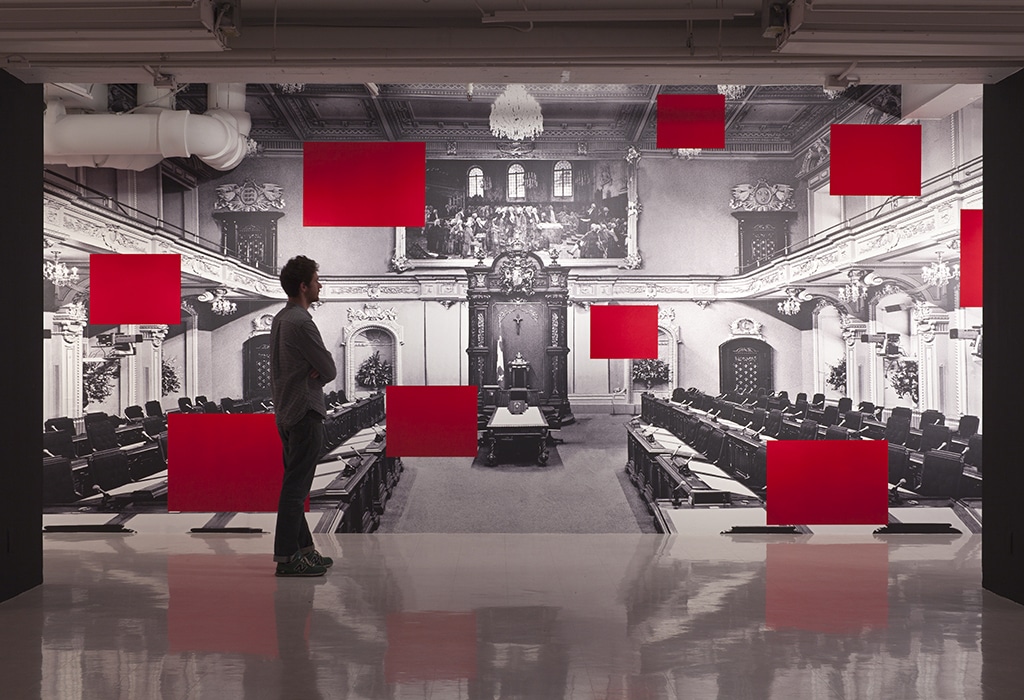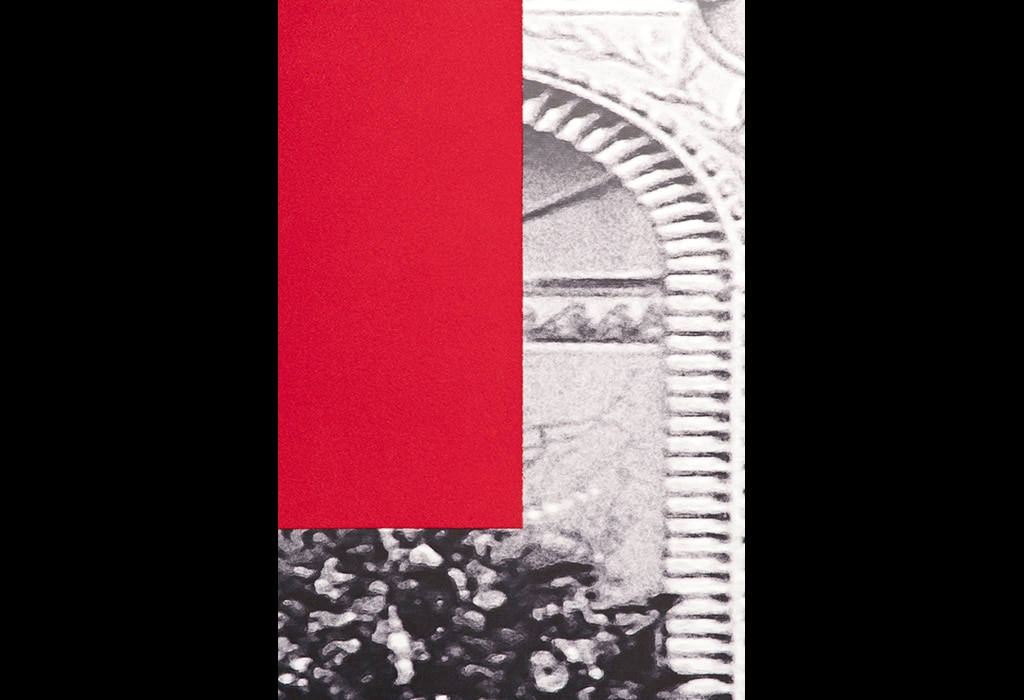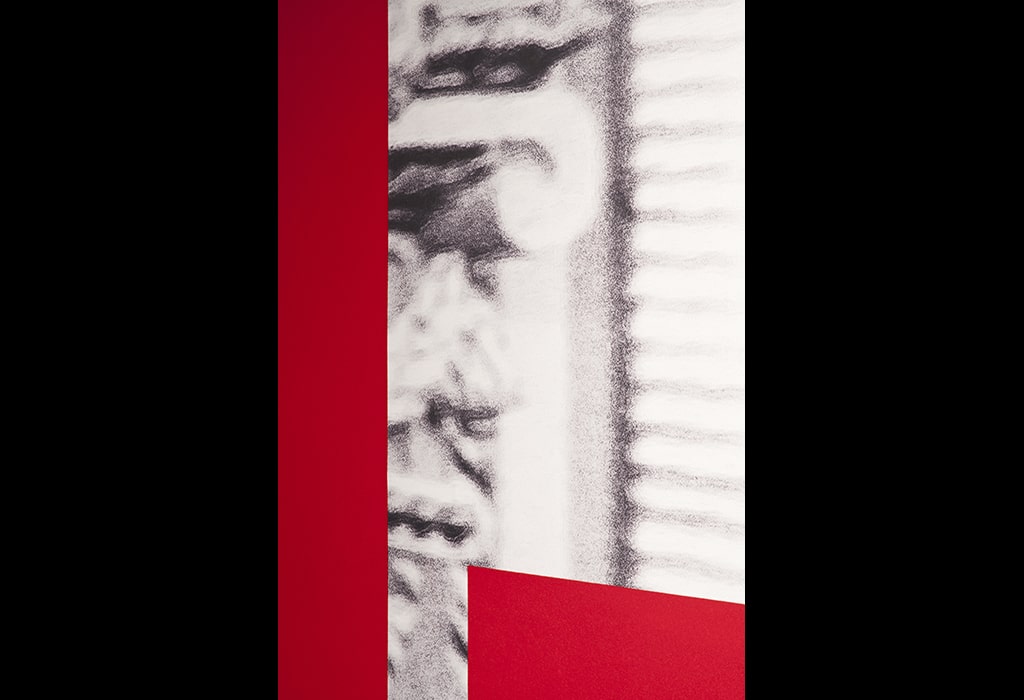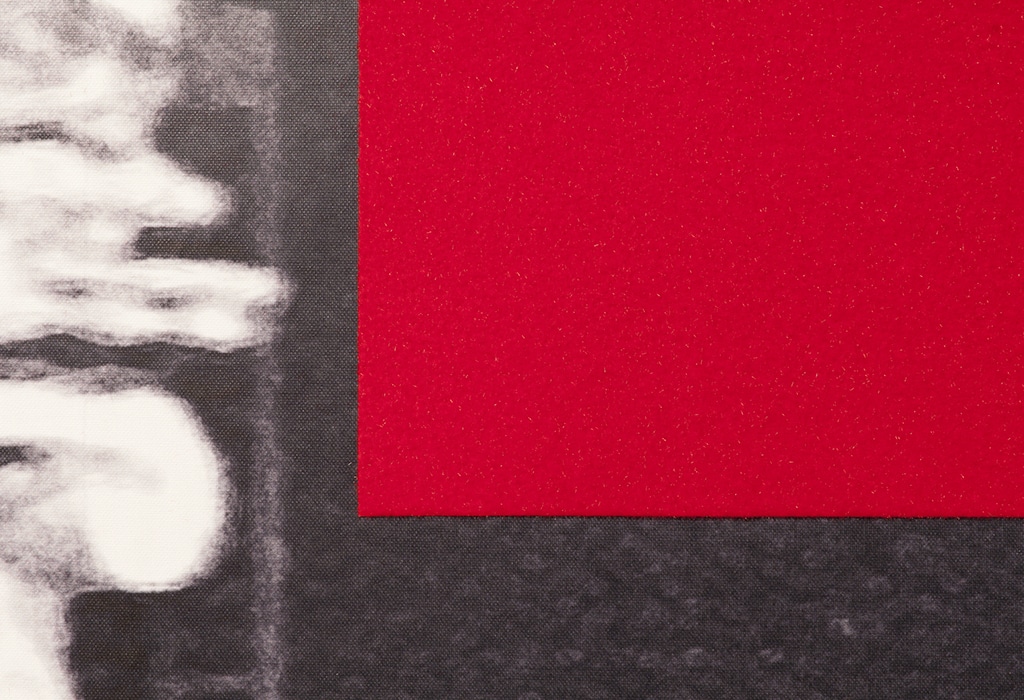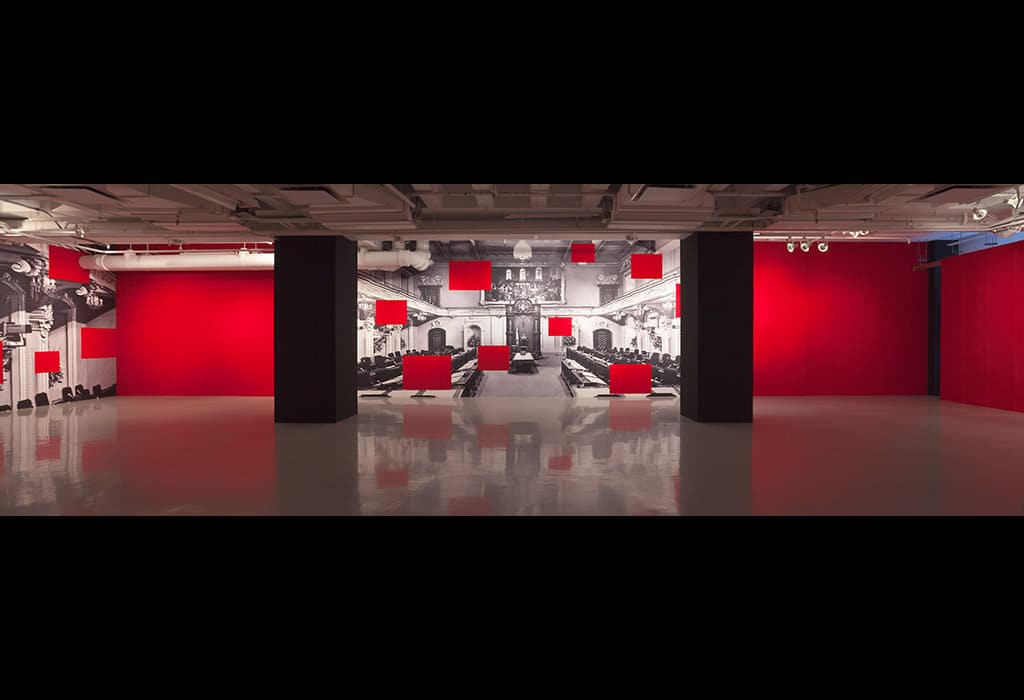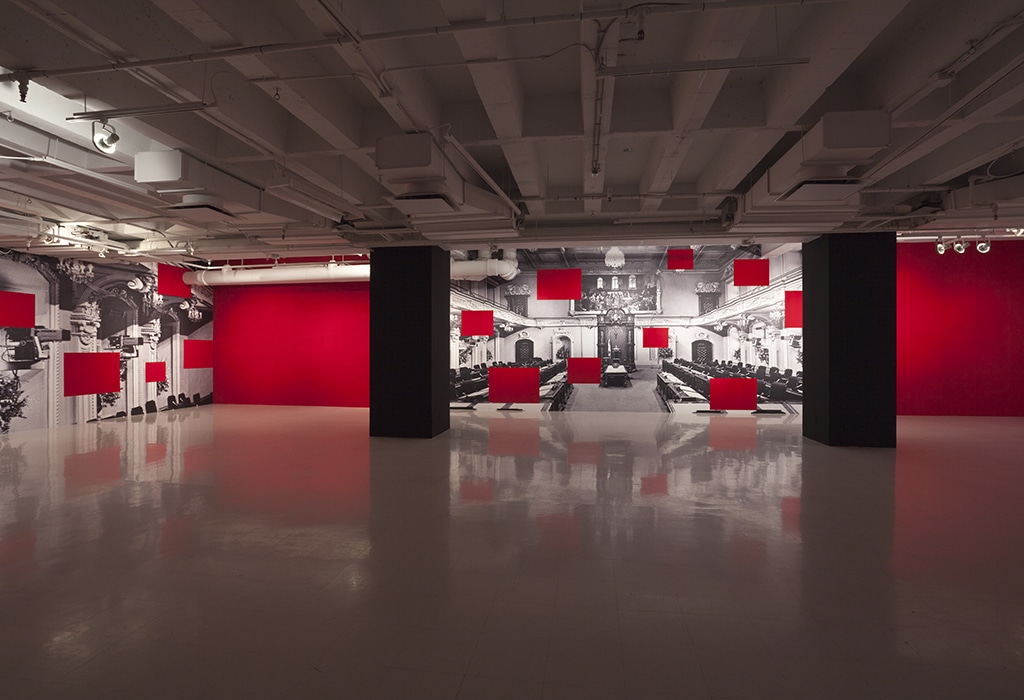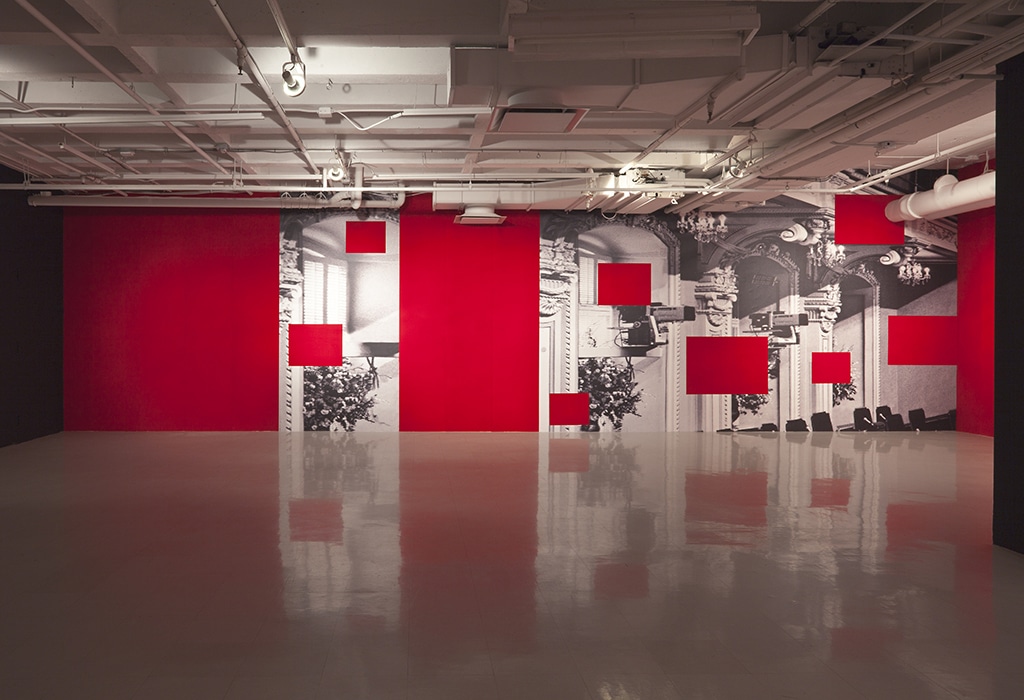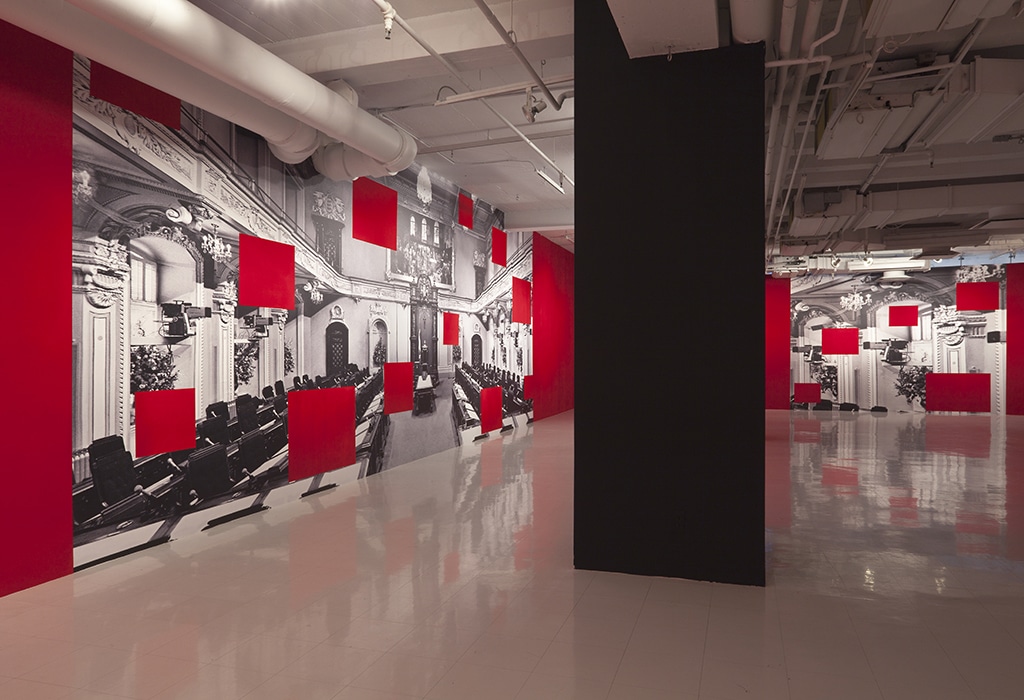At the end of the visible spectrum
Several forms of resistance permeate the work of Amantea, whose early works deals with topics connected with the marginalized groups or individuals. The materials and scale of her works are essential to confront the viewer as she seeks to highlight a social event, a contradiction or a historically important moment with significance for present-day social and political issues. In At the end of the visible spectrum, Amantea extends her exploration of forms of resistance by taking as her point of departure the recent symbol of protest in Quebec, the red square.
The red square, worn in response to an increase in university tuition fees, came to represent the student strike of 2012, also known as the Maple Spring. Amantea transforms this symbol in such a way that we become aware of the complexity of the questions and significations it raises and the history behind it. In the light of past desires for an equitable society, viewers are thus invited to think about recent social and political events through material and structural transformations of space.
Vicky Chainey Gagnon, from the exhibition catalogue, Resistance – And Then, We Built New Forms
At the end of the visible spectrum was exhibited at the La Galerie des arts visuels at Laval University as part of Manif d’art 7, Resistance – And Then, We Built New Forms curated by Vickey Chainey Gagnon. This exhibition took place from May 1 to June 3, 2014, at a number of venues in Quebec City, Quebec.
Made with the assistance of Anil Ragubance and with thanks to Lisanne Nadeau
Media: flock, paint, digital images of Le Salon bleu in the parliament building of the National Assembly of Quebec.
Dimensions: variable
Photography: Richard-Max Tremblay
